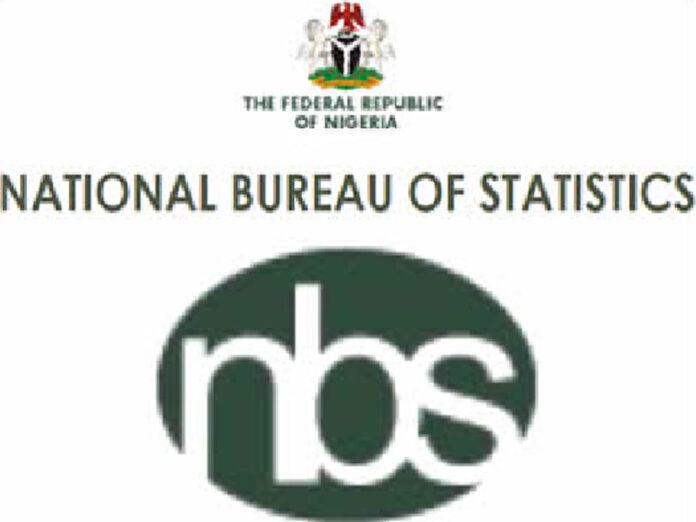CHIGOZIE AMADI
Over 24 million out of the 62.9 million children between five to 17 years in Nigeria as of 2022, were engaged in child labour, while 617,503 people were said to be in forced labour with no opportunity to exit their employment.
The statistics were contained in the 2022 Child Labour and Forced Labour Survey Report unveiled yesterday in Abuja by the federal government.
The survey was carried out by the Nigeria Bureau of Statistics (NBS) in collaboration with the International Labour Organisation (ILO) through the financial support of the United States Department of Labour (USDOL) and Netherlands Government.
The report showed that 24, 673, 485 (39.2 per cent) of children between 5 -17 years in Nigeria were engaged in child labour while 14, 390,353 (22.9 percent) of children are involved in hazardous work.
The survey further showed that 31,756,302 (50.5 per cent) of the children between 5 – 17 years in Nigeria were engaged in economic activity.
The report further indicated that the prevalence of forced labour was more in urban areas than rural areas.
While presenting the survey report, Mrs. Abiola Orosanya said that in terms of the percentage of children in child labour and hazardous work, the South East region has the highest prevalence of children involved in child labour (49.9 per cent), followed by North East geopolitical zone with 49.4 per cent.
The report said that (5.2 per cent of every 1,000 people (617,503 people) were in forced labour in their current jobs in 2022
According to the report, 41.1 per cent of the people engaged in forced labour ply their trade in agricultural sector, whereas 32.8 per cent are found in the service sector.
Speaking at the formal launch of the 2022 Nigeria Child and Forced Labour Survey reports, Minister of State for Labour and Employment, Nkeiruka Onyejeocha, said the purpose of the survey was to provide more accurate information on forced labour and child labour through data collection.
She was represented by the Permanent Secretary in thee Federal Ministry of Labour and Employment, Ismaila Abubakar.
The minister said that the report will help to inform policy direction and interventions towards the elimination of child labour and forced labour in Nigeria.
“We are aware that the survey was conducted in April 2022, that is, 22 years after the first Multiple Indication Cluster Surveys (MICS) survey was conducted. The launch and publication of the survey report was delayed to this time due to the technicalities and processes involved in the analysis of the survey result.
“As we know, the purpose of the survey is to improve information on forced labour and child labour through data collection which will help to inform policy direction and interventions towards the elimination of child labour and forced labour in Nigeria,” she said.
The Country Director of the ILO, Venersa Phala said that the 2021 global reports on child labour released by the ILO and UNICEF painted a troubling picture.
She said: “Worldwide, the number of children engaged in child labour has risen by 8.4 million to a staggering 160 million. For the first time in two decades, progress in combating child labour has notably stalled globally, with Sub-Saharan Africa facing particularly daunting challenges.
“The 2021 report points to a significant rise in the number of children aged 5 to 11 years in child labour, who now account for just over half of the total global figure. The number of children aged 5 to 17 years in hazardous work has risen by 6.5 million to 79 million since 2016”.
According to her, the agriculture sector accounted for 70 per cent of children in child labour (112 million) followed by 20 per cent in services (31.4 million) and 10 per cent in industry (16.5 million).
She said nearly 28 per cent of children aged 5 to 11 years and 35 per cent of children aged 12 to 14 years in child labour are out of school.
“Child labour is more prevalent among boys than girls at every age. When household chores performed for 21 hours or more each week are considered, the gender gap in child labour narrows. The prevalence of child labour in rural areas (14 per cent) is close to three times higher than in urban areas (5 per cent),” she said.
Statistician-General of the Federation and Chief Executive Officer of the NBS Adeyemi Adeniran said the exercise which was conducted successfully across the 36 states and the FCT, collected comprehensive data on the causes, characteristics, nature, and extent of child labour and forced labour in Nigeria.
“Using the best and most appropriate methodology for the implementation of this survey, the data collection was carried out in 2022, and since then, NBS has been working collaboratively with other members of the technical committee to finalise these results which we are launching here today,” he said.
Representatives of the United States Ambassador to Nigeria whose country supported the initiative with $200,000 said the essence of the survey report was to enable the government to have first hand information on the prevalence of child labour so as take measures to address the challenge.

























